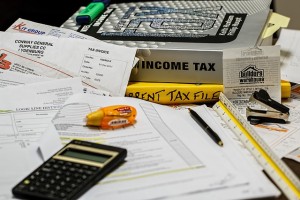Farmers are not taxed in the same manner as other taxpayers and are subject to the provisions of the First Schedule to the Income Tax Act. This sets out the procedure for taxing income from agricultural pastoral and other farming activities. Farmers are also allowed to average their farming income in determining their tax liability.
SUMMARY OF THE FIRST SCHEDULES MAIN PARAGRAPHS
Paragraph Subject
2 – 5 & 9 Valuation of livestock and produce
6 – 7 Election of standard values
8 Ring fencing of livestock acquisitions
11 Donations and in specie dividends
12 Capital development expenditure
13 Forced sales and drought relief provisions
14 – 16 Plantation farming
17 Sugar cane destroyed by fire
19 Rating formula for farmers (who are not companies)
20 Expropriation of farming land
RATING FORMULA APPLICABLE TO FARMERS
In consequence to the possibility that a Farmers income may fluctuate from year to year he may elect to be taxed in accordance with a rating formula. In terms of this formula the farmer is taxed on his average taxable income in the current and preceding four years.
Should he elect to make use of this formula it is binding upon him in future years and he is not permitted to make use of the provisions relating to government livestock reduction schemes rating formula for plantation farmers and provisions relating to sugar cane farmers.
CAPITAL DEVELOPMENT EXPENDITURE (PARAGRAPH 12)
The following items of capital expenditure incurred during a year of assessment are deductible against farming income
expenditure which is not restricted to taxable income from farming
– eradication of noxious plants
– Prevention of soil erosion
expenditure which is restricted to taxable income from farming
– Dipping tanks
– dams irrigation schemes boreholes and pumping plants
– fences
– additions erection of extensions and improvements to farm buildings (including farm schools and domestic buildings of employees not related to the farmer or shareholders of a farming company but limited to a maximum of R6 000 per employee and recouped if a non-employee takes occupation)
– costs of establishing the area for and the planting of trees shrubs and perennial plants
– building of roads and bridges for farming operations
– carrying of electric power from main power lines to farm machinery and equipment
The excess expenditure over taxable income from farming is carried forward to the next year of assessment.
Machinery implements utensils and articles for farming purposes are written off over three years on a 503020 basis if they were brought into use on or after 1 July 1988 (section 12B). Section 12B does not apply to motor vehicles used to convey passengers caravans aircraft (excluding crop-spraying aircraft) or office furniture and equipment. Normal wear and tear may be claimed on these items.
NON FARMING INCOME
Income from non-farming sources should be shown separately from farming income
The most common examples of non-farming income are
– interest received
– income derived by a farmer from carrying on a trade other than farming including a salary from full-time or part-time employment
– annuities
– rental income from farmland

